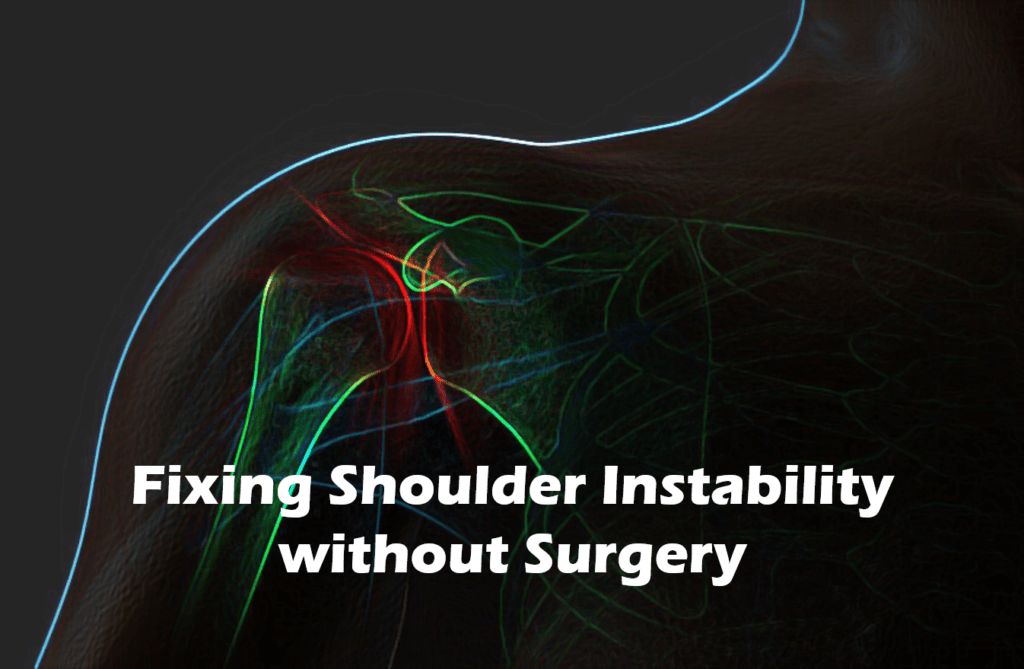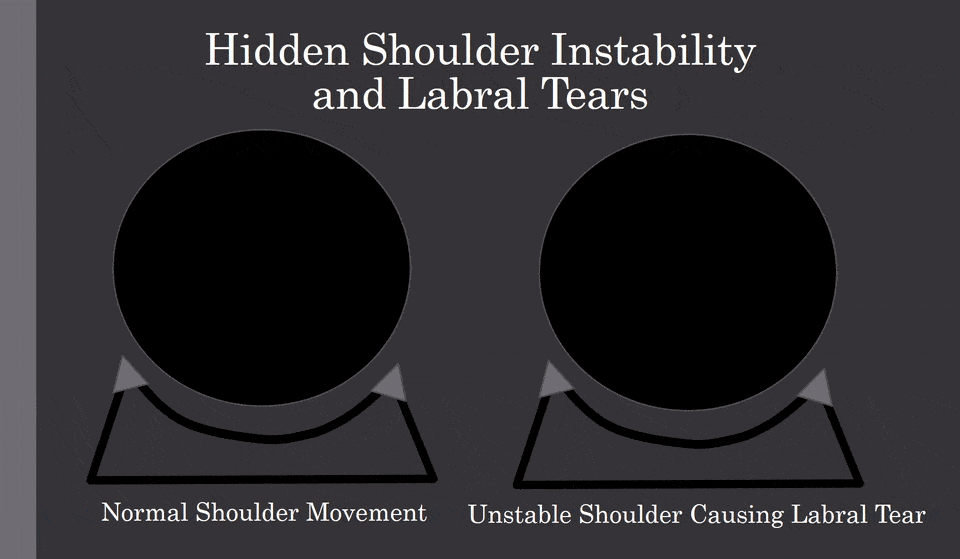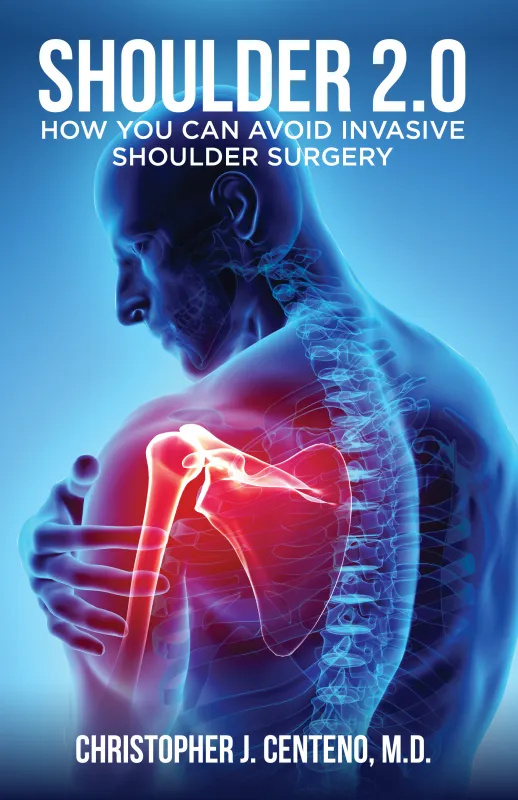Ask Dr. C Episode 20-Shoulder Instability

One of the things that I see all day in the clinic that I shouldn’t be seeing at all is unrecognized shoulder instability. It’s rampant. So what is it? Do you have it? What can be done about it?
The Ask Dr. C Question
“Severe traumatic anterior dislocation of my right shoulder years ago has resulted in subluxation of the shoulder and chronic hand pain due to nerve compression (Thoracic Outlet Syndrome). The pain is reduced with PT, including manual adjustment, stretches, and some exercises, but it never goes away completely. My question: Can orthobiologics help seat and stabilize the shoulder joint to diminish shoulder subluxation?”
So let’s dig into this question. The shoulder is a shallow ball and socket joint. It’s surrounded by a labrum which is the lip around the shallow socket. There’s a capsule around that which serves as the ligaments that help to hold everything in place. Then around all of that, you have the rotator cuff tendons which also help to actively stabilize the shoulder joint. Want to learn more? Download my book below:
Shoulder Dislocation
The ball of the shoulder in its shallow socket can dislocate or get pushed or pulled out of the socket. When this happens, usually the shoulder just pops back in by itself. Sometimes the ball needs to be put back into the joint. Either way, often the shoulder capsule is stretched out or damaged.
Why is this last bit of information so important? The shoulder capsule holds the shallow ball in the socket, so if it gets too stretched out, the shoulder becomes chronically unstable. See below:

Note how a shoulder that’s unstable like the one on the right has the ball in the shallow socket that bangs into the little triangle which here represents the labrum.
Symptoms of an unstable shoulder include popping and cracking in the main shoulder joint. The shoulder may feel like it’s going to pop out of place, especially with certain movements or if it’s relaxed. It may also pop out of place and relocate by itself. Some patients with severe instability need to make trips to the ER to get the joint shoved back into place.
Treating Shoulder Instability
So how do you treat a shoulder joint that’s too loose? Surgically, there are options where the shoulder capsule is sutured or burned thermally. However, is there an option that uses orthobiologics to enhance healing? Yes.
We often successfully treat shoulder instability by precise injections of platelet-rich plasma or bone marrow stem cells into the damaged capsule via precise ultrasound guidance. This helps the damage heal and the capsule tighten, returning stability. In addition, the labrum can also be treated if needed. Also, damaged rotator cuff tendons may also need to be injected. These are all non-surgical treatments that require minimal downtime, usually no bracing or slings, and often the recovery is full activity.
Why is Shoulder Instability Often Under Diagnosed?
The big problem with orthopedic surgery and the entire concept of instability is that it is often considered a binary problem. Meaning something is either horribly unstable and in need of immediate surgery or it’s normal. This is of course fiction, as there’s a third possibility, that the ligaments that hold an area together are stretched out and allow too much wear and tear over time leading to long-term damage.
Many patients with shoulder instability often find themselves in this weird spot. They have a shoulder that may have completely or partially dislocated many years ago, but now it’s unstable. Meaning that they know the joint feels loose with many episodes where it kind of comes out of place, but since it’s not severely unstable, they are sent to physical therapy. That helps, but it doesn’t solve the laxity issue. That’s where the patient above finds himself. In this “doughnut hole” of care between surgery and PT. That’s where many of our patients live and why orthobiologic injections for this issue of shoulder instability are such a great option.
The upshot? Shoulder instability is a common problem that often goes overlooked. Many patients find themselves stuck between surgery and PT. Precise ultrasound-guided orthobiologic injections into the capsular ligaments can often get rid of this issue.

If you have questions or comments about this blog post, please email us at [email protected]
NOTE: This blog post provides general information to help the reader better understand regenerative medicine, musculoskeletal health, and related subjects. All content provided in this blog, website, or any linked materials, including text, graphics, images, patient profiles, outcomes, and information, are not intended and should not be considered or used as a substitute for medical advice, diagnosis, or treatment. Please always consult with a professional and certified healthcare provider to discuss if a treatment is right for you.

